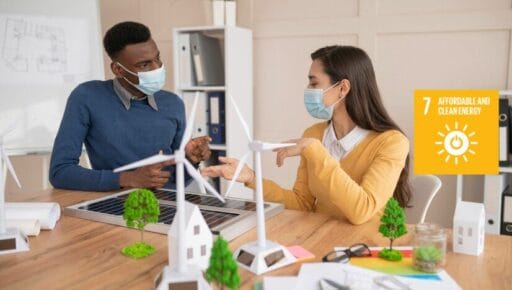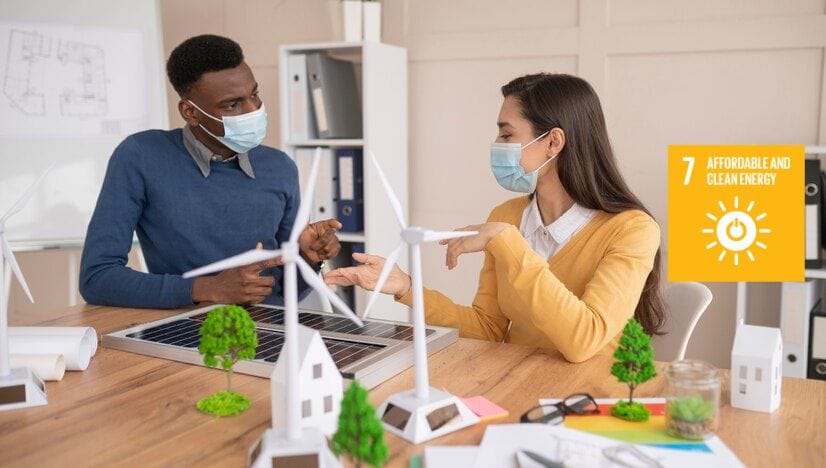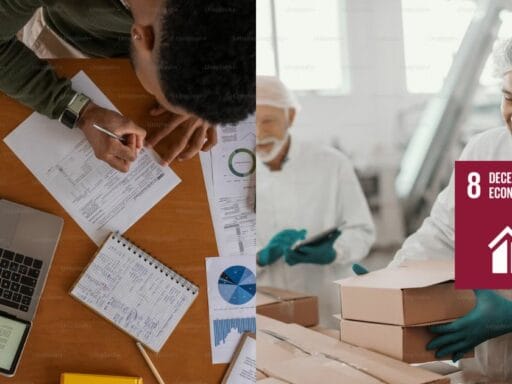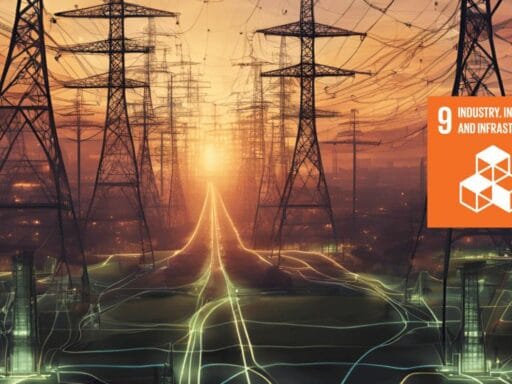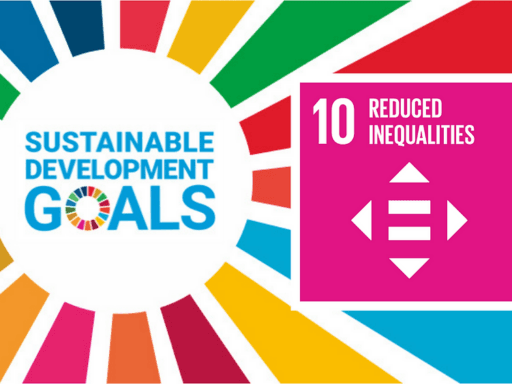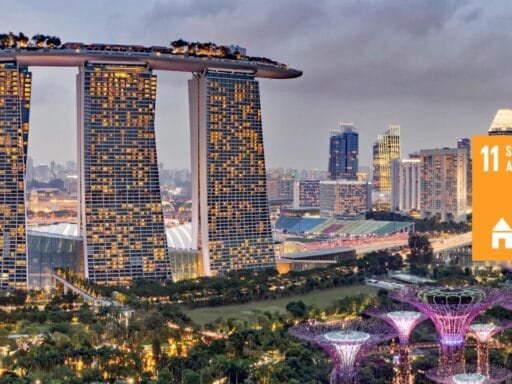The United Nations‘ Sustainable Development Goal (SDG) 7 aims to guarantee that everyone has access to cheap, dependable, and sustainable energy. This goal highlights the need for universal access to modern energy. This is a critical factor in eliminating poverty, enhancing health, and sustaining economic growth. As we shift to renewable energy, SDG Goal 7 has become critical to mitigating climate change and improving global sustainability.
SDG Goal 7 encourages clean and affordable energy. This goal aligns with efforts to reduce carbon emissions and decrease reliance on fossil fuels. Access to renewable energy is critical for healthcare, education, and economic growth. Clean energy sources such as solar, wind, and hydro help to reduce global greenhouse gas emissions. As a result, they mitigate climate change and safeguard ecosystems. Furthermore, inexpensive energy promotes economic stability by cutting corporate operating expenses and increasing household income distribution.
Targets and Indicators of SDG Goal 7
Universal Access to Affordable and Reliable Energy Services
By 2030, the goal is to ensure that everyone has access to inexpensive, dependable, and contemporary energy. This entails developing infrastructure and improving technology. The focus is particularly on distant or disadvantaged locations to ensure access to energy and clean cooking fuels. This target’s indicators include the proportion of the world population with access to electricity and clean cooking fuels. These indicators highlight the difference between urban and rural regions. Tracking these metrics helps governments recognize where access is inadequate, allowing for more focused policy and investment initiatives.
Increase the Share of Renewable Energy in the Global Energy Mix
To tackle climate change, SDG Goal 7 calls for a considerable increase in renewable energy’s contribution. This includes all sorts of renewable energy sources, such as solar, wind, hydro, and biomass. These sources promote cleaner energy generation and reduce reliance on fossil fuels. Progress is monitored using indicators such as the proportion of renewable energy in final energy consumption. Investments in renewable energy projects and innovation, such as offshore wind farms and localized solar systems, are critical to meeting this aim.
Double the Global Rate of Improvement in Energy Efficiency
Improving energy efficiency means using less energy to provide the same or higher level of service. This can significantly cut greenhouse gas emissions and lower energy costs. The emphasis here is on promoting efficient technology, like as LED lighting, good quality machines for less electric consumption. It also need improving practices in the industrial, commercial, and residential sectors. The indicator used to track progress toward this goal is energy intensity, which is calculated as primary energy usage per unit of GDP. This allows governments to track their efficiency improvements, which can then be used to steer future innovation and policy assistance.
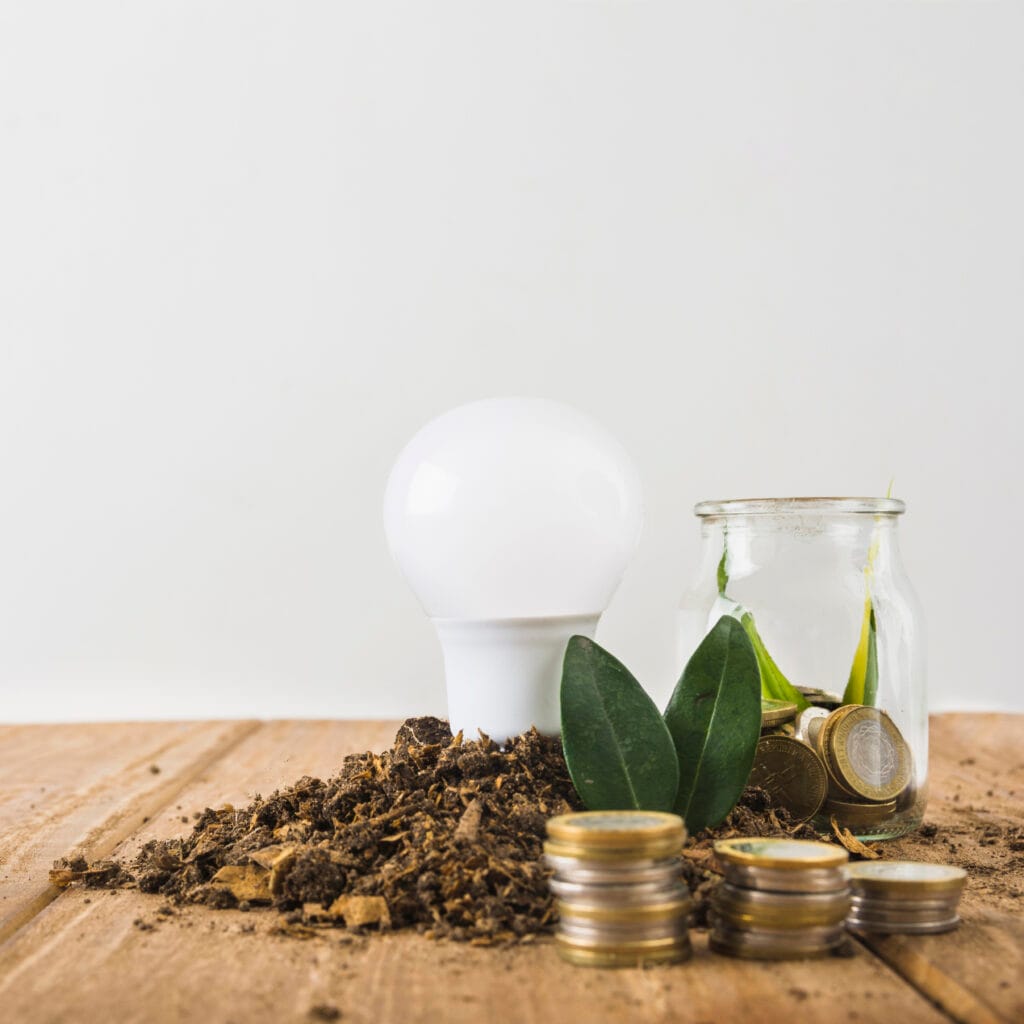
Case Studies of Affordable and Clean Energy
Case Study: Kenya’s Success with Clean Energy Solutions
Kenya has made significant progress in achieving SDG Goal 7, notably in expanding access to cheap, clean energy. In recent years, Kenya has built an excellent renewable energy portfolio. Renewables account for about 85% of its electricity, including geothermal, hydropower, and wind energy. Kenya is one of Africa’s pioneers in renewable energy utilization, with geothermal energy from the Rift Valley accounting for more than 40% of total power generation.
This change began with government-led programs and regulations to encourage renewable energy investment and minimize dependency on imported fossil fuels. The Kenyan government implemented the Feed-in Tariff Policy. It also formed the Energy Regulatory Commission to improve the regulatory environment for sustainable energy. Kenya attracted major international investment by fostering a permissive climate. This resulted in the establishment of the Lake Turkana Wind Project and the Olkaria Geothermal Plant, both of which contribute considerably to national energy output.
In addition to large-scale initiatives, Kenya has prioritized off-grid and decentralized solutions in distant locations. Solar energy has revolutionized the delivery of power to rural populations with restricted access to the grid. Companies such as M-KOPA Solar empower households by providing a renewable energy source that lowers dependency on kerosene.
Case Study: Morocco’s Pioneering Shift to Renewable Energy
Morocco has become a global example for achieving SDG Goal 7 through ambitious renewable energy initiatives. Morocco, with a strong commitment to reducing its reliance on imported fossil fuels, has set an ambitious goal of generating more than 52% of its power from renewable sources by 2030. The nation’s flagship project, the Noor Ouarzazate Solar Complex, is one of the world’s largest solar projects. This facility, located in the Sahara Desert, generates over 580 MW of electricity, enough to power over a million households and drastically reduce Morocco’s carbon impact.
Morocco’s renewable energy achievement is the result of both strong government policies and international collaboration. The Moroccan Agency for Sustainable Energy (MASEN) has been instrumental in attracting foreign investment and managing the country’s renewable projects. Morocco has collaborated with institutions such as the World Bank and the European Investment Bank to get money and technical knowledge for large-scale projects.
In addition to large-scale solar projects, Morocco has invested in wind farms along its coastline and small-scale solar solutions for rural electrification, addressing energy requirements in neglected regions. The country’s multidimensional strategy has not only made clean energy available to millions, but it has also produced thousands of employment, therefore promoting long-term economic growth. Morocco’s renewable energy achievements indicate a proactive approach toward SDG Goal 7, demonstrating that even nations with limited fossil fuel resources can become pioneers in clean energy innovation.
Challenges in Achieving Affordable and Clean Energy
- Financial and Investment Barriers
The move to renewable and contemporary energy takes significant finance, which is frequently unavailable in underdeveloped countries. The high prices of renewable technology such as solar panels and wind turbines make adoption difficult in the absence of adequate subsidies or financial incentives. To close this gap, international organizations and governments must collaborate to offer funds, incentives, and access to low-interest loans for poor nations.
- Policy and Regulatory Constraints
Outdated regulatory frameworks in many countries can stymie the expansion of renewable energy. Energy markets are frequently organized to favor fossil fuels due to long-standing subsidies, making clean energy less viable. Modernizing existing policies to promote sustainable energy, such as carbon pricing and renewable energy objectives, is critical for overcoming these barriers.
- Technological and Infrastructural Limitations
Many communities, particularly isolated and rural regions, lack the infrastructure required to properly create and transport sustainable energy. Renewable energy implementation is hampered by factors such as low grid capacity, energy storage issues, and inadequate transportation infrastructure. Investing in contemporary grid technologies and sustainable transportation networks is critical for making clean energy available to everyone.
- Public Awareness and Behavioral Barriers
A lack of public understanding about the benefits of clean energy might stymie adoption, particularly when traditional energy sources such as kerosene or coal are more recognizable and available. Changing consumer habits to increase energy saving and acceptance of renewables is crucial, and this may be accomplished through education and incentives for sustainable energy usage.
Practical Steps for Advancing SDG Goal 7
- Promote Investments: Governments and private investors can set aside funds to create and maintain renewable energy plants such as solar farms, wind farms, and hydroelectric power plants. International cooperation and green funding projects are critical in this regard, since they help to improve infrastructure and bring renewable technology to rural populations.
- Implement Policies: Policymakers can implement policies such as renewable energy project subsidies, tax breaks for green technology, and tighter energy efficiency standards in the industrial and residential sectors. Setting ambitious renewable energy objectives and regulatory frameworks aids nations’ transition from fossil fuels to sustainable alternatives.
- Leverage Digital and Smart Technologies: Smart meters, grids, and energy storage devices increase energy efficiency by minimizing waste and allowing users to monitor their usage in real time. Furthermore, advances in battery storage and grid management enable the efficient use of intermittent renewable energy sources such as solar and wind.
- Foster Public Awareness and Education: Encouraging sustainable energy habits in the community can increase demand for clean energy. Educational programs and awareness campaigns may educate people on the benefits of renewable energy and energy-saving strategies, making it simpler for communities to implement these practices.
Top Questions
What is the main goal of SDG Goal 7?
The primary objective is to ensure universal access to affordable, reliable, sustainable, and modern energy by 2030.
Why is affordable and clean energy essential?
Affordable and clean energy reduces poverty, improves health, supports economic growth, and is a key solution to climate change.
How can developing countries achieve SDG Goal 7?
Developing countries can prioritize investments in renewable energy, foster public-private partnerships, and seek international financial aid.
What are the benefits of renewable energy?
Renewable energy decreases carbon emissions, improves public health, creates jobs, and ensures sustainable economic growth.
How is SDG Goal 7 linked to other SDGs?
SDG Goal 7 is interconnected with goals like No Poverty, Good Health and Well-being, and Climate Action, as energy access underpins improvements in health, income, and environmental sustainability.
Conclusion
SDG Goal 7: Affordable and Clean Energy is critical for attaining global sustainability. Access to clean and inexpensive energy strengthens communities, improves health, and promotes economic progress. As governments work toward these goals, supporting legislation, technical advancements, and financial investments are critical. SDG Goal 7 is a worldwide commitment to ensuring a sustainable future for all, and it represents a huge step toward a greener, healthier, and more equitable society.


